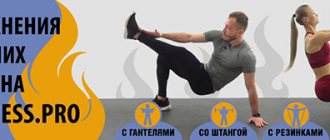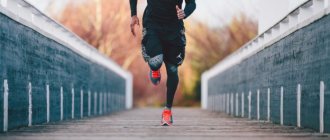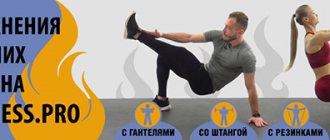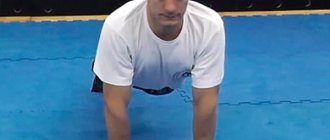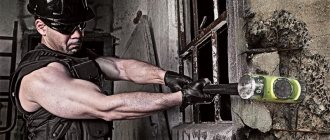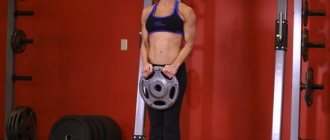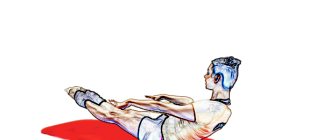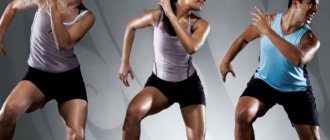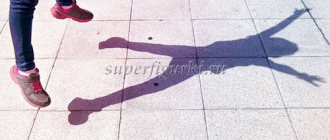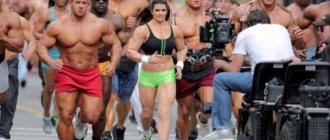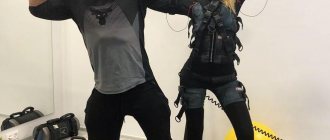Good day, dear friends! If the Internet has brought you to my blog, then you are probably involved in some kind of sport and want to improve in it. This is great because today I will give you a lot of tips on how to increase your punching speed at home.
One of the most popular sports that I know is boxing. Boxing is a very practical and effective martial art that allows you to master self-defense skills in a short period of time. The most dominant factor in boxing is mass, if you don't have it, then speed will save you!
You need to master:
• Techniques of high-speed and productive movement • Quick reaction • Quick strike
Using all these skills, your mass will be enough to defeat a larger opponent.
Have you heard the phrase the bigger the cabinet, the louder it falls?
So it was invented by the same guys who mastered high-speed combat techniques. It is mainly used in karate.
The technique of high-speed movement will give you an advantage over your opponent, since he will have no chance to aim at you, and ideally even hit you. That is, you can master moving to the sides in order to avoid using blocks to move away from your opponent and counter-attack him at open active points.
Quick reaction is undoubtedly an important aspect in boxing. Having developed certain reflexes in your body, you can easily defend yourself without fear of missing a blow and even end blocks with counter attacks! It takes a lot of time and patience to develop a reaction, but the results are worth it!
Well, the main topic of our article is a quick strike. Impact force is sort of like speed times mass, and if you don't have a lot of mass, you can easily compensate for it with speed. Plus, a high-speed strike has a better chance of breaking through the enemy’s block than just a strong one, since the opponent’s eye does not even have time to react to it. And if the blow is delivered to the active points, then the pain from it will be sharper and more burning.
Question about strikes
In boxing, the important components for victory are excellent reaction speed and the strike itself.
The most effective strikes are considered to be attacking and counterattacking. They are based on the dynamics of muscle contractions and the accuracy of implementation.
The main task of the coach and his student is the correct placement of the shot. It implies the presence of the following stages:
- The leg pushes off the floor.
- The body turns.
- The body mass is transferred to the pushing leg.
- The hand works.
Impact speed is characterized by the implementation of movement with increasing acceleration and power towards the final phase of the attack.
Here, exercises to increase impact speed are performed with the following additions:
- Weights.
- Dumbbells.
- Expanders.
- Layouts with signal complexes.
- Electronic targets.
In them, the boxer practices with increased tension. In battle without such influence, his attacks are stronger and more dynamic.
What is the best way to start exercising with weights? The minimum weight is used first. Then there is a systematic increase.
Exercises are carried out with a certain frequency. It is formed personally. It is important here to avoid overwork. Classes must be supervised by an experienced specialist. He also monitors the correct technical execution of the attack.
The most common equipment for increasing the speed of attacks are: dumbbells (from 1 to 5 kg), weights, belts, and special vests.
They make it easier to select the optimal load and gradually increase it.
A great exercise in boxing is changing the weight of the projectile when delivering a punch. There is an alternating increase and decrease. This way each hand receives an equal load. And at the end of the lesson, the strikes are perfected without projectiles.
To effectively increase the speed of your attack, you need to train in intense dynamics.
You can increase the required performance by using leg weights, such as cuffs.
When working with them you need to run, jump and squat. This is the simplest set of exercises. It is varied and supplemented as necessary.
Running speed is also important. To increase it, boxers run with accelerations, obstacles, and weights. The dynamics and vectors of running change.
How to train all these skills you ask?
The movement technique is the easiest to deal with. You need to master simple movements: forward, backward, left, right. In order to understand how to use forward and backward movement, an exercise such as the shuttle will help you.
When your sparring partner hits you directly, you need to jump back a little so that his hand does not reach you, and as soon as he finishes the pressure with his hand, jump back forward and hit the active point, for example, the liver. You must understand that all this happens in a split second.
To master the movement from left to right, practicing circular movements will help you. Your task during the impact will shift from its trajectory. That is, if you receive a direct blow to the head, then your task is to make a circular movement to the left, moving away from the trajectory of the blow and at the same time getting closer to your opponent. Thus, you enter the so-called dead corner. This is when the enemy does not have the opportunity to strike you with his other hand because you are standing almost behind his back and the opponent’s very vulnerable points are open in front of you: ribs, back, kidneys, liver.
This technique is especially effective when the opponent is working in an aggressive, pressing manner. Just move away from the line of attack and hit the body. A couple of such shifts and victory is yours.
How to increase your punching speed
(Click on the link above for details)
- We stand with our feet shoulder-width apart, our legs bent, our arms in the starting position for striking. In the initial position, the hands can be at the head when practicing from a combat position (for situations when the fight has already begun) or they can be in the area of the hips and abdomen to practice the situation of an unexpected blow (it is also called “from the pocket”). From the starting position, we slowly move the hand with a slight controlled tension along the trajectory of the blow to its end point. We fix the final position for 1-2 seconds, not forgetting that the real impact of the fist with the target should occur 15-20 cm before the limb is fully straightened (jab, cross), when hitting a hook or swing, breaking through the imaginary target should be the same 15-20 cm (it’s just that when doing a side kick, the arm doesn’t always tend to straighten, so we’re talking about a punch). From the fixation position, we “pull out” the hand as quickly as possible along the shortest trajectory to the starting position. When performing the movement, it is necessary to observe the general principles of rational striking technique of the hands: the first impulse to the movement is given by the push of the striking hand of the foot, followed by a turn of the leg on the toe (larger (boxing) or smaller (karate) depending on your technique), which “pulls” the represents the rest of the kinematic chain knee-pelvis-shoulders-elbow-impact link (in our case, the fist).
- The same thing, only small dumbbells (no more than 1 kg) are held in your hands.
- The same exercise as in step 1, but the difference is that we work against the wall. Slowly straightening the arm slightly (so that there is no pain), we “stick” it into the wall with a striking motion. We return to the starting position due to a powerful push of the “beating” hand from the wall.
- When the exercises are mastered from a shoulder-width apart position, all possible variations of exercises 1-3 from the fighting stance are practiced. To get into a comfortable fighting stance if you're a beginner, jump high into the air, squeezing your knees toward your chest, and when you land, spread your legs to a comfortable width and length (with your legs neither too close nor too far apart). Repeat the jumps several times, finding a position that is comfortable for you.
How to increase the speed of your hand strike?
“Pulling out” a limb is practiced first, since it is unnatural and difficult for beginners to master when they have already practiced an incorrect blow with sticking to the target.
Look how Cung Le punches. The ideal jab: as long and sharp as possible
The strike itself, from the beginning to the penetration of the target, is practiced in several stages. Here it is advisable to have a partner with a boxing paw. My friends and I spent our entire lives training on homemade ones, because the ones sold in the store only got through once, and already on the third or fourth hit the owner’s broken hands began to tremble.
- We work single straight and lateral from a fighting stance along the paw. We twist the body with a push of the foot, throwing out the arm as quickly as possible, and do not forget the “pulling out” skill that we acquired in the previous 4 exercises. As soon as the technique begins to turn out confidently and consistently well (quickly, without falling over or loss of strength), we move on to the next exercise.
- The partner holds his paw under a direct or side blow at a distance where the striker can reach it without a step, for a short period of time, then removes his paw strictly back. You should start with a time interval of 2 seconds and gradually reduce it, bringing the impact speed to the maximum possible.
- This exercise is only for straight or corkscrew (if you don’t know what this is, then hit it straight) punches. The partner holds his paw within reach of the striker. As soon as he sees that he is hitting, he immediately moves his paw so that the striker’s blow falls into the void. You cannot move your paw back, only to the sides, like the enemy’s head evading. The striker’s task is to strike so quickly that the partner with the paw does not have time to remove it without losing the force of the blow.
- When mastering the 3 above-described exercises with paws, using strikes with both hands from a place, practice high-speed hand strikes with a step.
Next comes the improvement of the speed of strikes in series on the spot, then with various steps. Improving the speed of series goes inextricably with the skill of correctly placing accents in combinations, since hitting many accented blows quickly and consistently is problematic. Typically, in long strings, every second or every third beat is emphasized.
Good work on the paws, you can learn how to hit and hold the paws. Proper paw work teaches your hands to “fly.”
How to develop the speed of kickboxing strikes.
By the way, to make your hands “fly”, it’s a good idea to hit hanging sheets of paper. It’s better to start with newspaper sheets, cut into A4 format. Gradually you need to switch to writing paper and sheets for printers with a density of 80 (forgot the units of measurement). And in this video, a strong man tears five sheets of A4 thick paper with a sweeping hook.
And then he shows a fast short straight line.
“If your enemy does not see your hand, which strikes him, then you will not see him again either” - a Chinese aphorism.
For those who don’t like to bother with a long analysis of what, where and why, I can recommend a video course on Muay Thai, which you can read about here and download there. It contains everything an unprepared person needs to know in order to confidently confront unprepared, but arrogant and more numerous opponents, and not just how to increase the speed of a punch. Sorry, but if you are not a pro, and against you is someone who has given half his life to training and fighting, then there is little chance (almost no or nothing).
Exercises to increase speed
Development of the muscles of the shoulder complex
- throwing a ball with sand at a wall or a partner, knocking the ball out of a partner’s hands;
- stretching muscles and practicing blows using an expander or tourniquet;
- development of visual response through the use of electronic targets and signal layouts;
- performing a series of blows at maximum speed on a pear or bag;
- working with a partner to accelerate each type of strike;
- alternately performing strikes with and without weights, with a change in weight;
- flexion and extension of the arms (sideways or in circular movements), swinging the arms (vertically and horizontally), exercises must be performed as quickly as possible, in a standing position or in combination with walking or light running, etc.
Core muscle development
- alternate bends forward and backward, turns right and left;
- circular movements of the body with a change of direction at a signal;
- exercises with a hoop, turning the body while jumping, jumping rope;
- running with sudden acceleration or change of direction at a signal;
- practicing defensive and attacking movements with and without weights;
- other sports (basketball, tennis, volleyball, baseball), etc.
The key to success as a professional boxer is constant self-development and the will to win. The most important factors in achieving a high result are the development of strength, speed, endurance, a properly selected training program, which includes exercises for the comprehensive preparation of the athlete, willpower and the desire to win. All this, undoubtedly, is a significant part of victory, but it is also necessary to constantly improve the fighting technique and work on the “reaction”, because calculating the opponent’s fighting tactics and changing your own in a timely manner means gaining a significant advantage in the ring.
Points to remember
A powerful punch is obtained not only due to the high speed of the lunge, but also with the help of its own weight. If you can put the entire mass of your torso into your hand, the result will exceed all expectations. In order to avoid possible injuries in the form of dislocations, it is necessary to strictly follow the technique, taking precautions when performing exercises.
Meaning and position of feet
The feet play an important role in increasing the striking power of the hands. Their movement and position are subject to the following rules:
- The feet should be positioned slightly wider than the shoulder girdle.
- The leg is turned in the direction of the movement performed by the hand, while initially the heel is always raised.
- When a strike is performed with the right hand, the right heel rises beforehand, and the left one stands motionless. And so on the contrary.
- Remember that proper foot placement during a lunge greatly increases its power, but is not the only determining factor to consider.
Important Tips for Fist Power
To increase the power of your fist at home, you need training, but before you start, be sure to familiarize yourself with the following recommendations:
- During the attack, the knees should be kept slightly bent and the body weight should be shifted slightly forward.
- At this time, the hips turn in the direction where the opponent is.
- In close contact combat, increased pressure is facilitated by full-scale movement of the entire body.
- You cannot stretch forward; body movements must be sharp and clear.
- If you move your arm back when swinging, you give the opponent time to orient himself and predict the direction of the arm's movement.
- When attacked, the hand is clenched as tightly as possible.
- Every new element occurs with the exhalation of air.
All of the above recommendations should be followed in combination and not individually.
Introduction
In the modern world, young people are increasingly striving to find themselves in some kind of sport, and the choice of many falls on boxing. This is explained by the fact that boxing involves not only performing strength exercises, but also primarily developing the athlete’s speed, endurance, strength, the ability to quickly make decisions, react to the slightest changes in the opponent’s strategy, and, of course, the ability to calculate his actions several moves ahead . Along with developing strength and endurance, increasing a boxer's speed is one of the most important stages in improving his skills. Speed training includes exercises to develop punching speed, boxer reactions, developing running speed, etc.
Plyometric push-ups
Your muscles are made up of two types of fibers: slow and fast. Slow twitch muscle fibers contract slowly and fatigue slowly, coming into play during endurance activities such as long-distance running.
Fast twitch fibers are those that are activated during work that requires strength, speed, and power. You need not only fast, but also strong, powerful hands that can deliver a knockout blow. Plyometric exercises are one of the best ways to train fast-twitch fibers.
How to do the exercise. Take the correct position. Lie on the floor and align your body as much as possible in one line with your arms straight. Inhale, bend your elbows and lower yourself until there are a couple of centimeters between the floor and your chest. Exhale and push off the floor as hard as you can, then land with your arms straight. If it works, then at the top point you can clap your hands.
